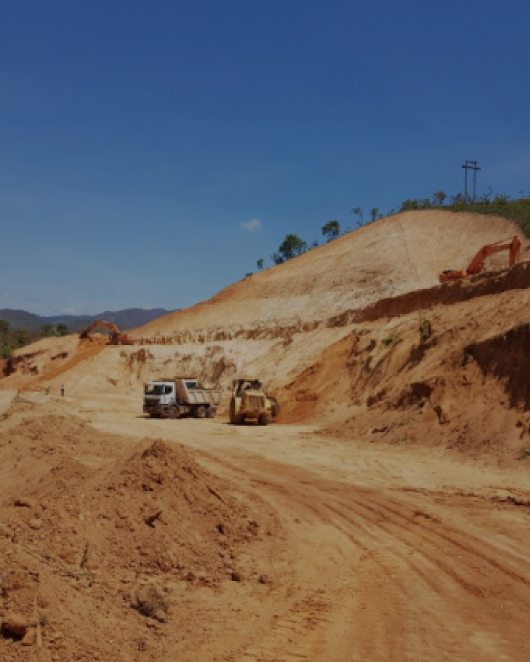Author: admin
Market Update – April 30th, 2020
Market Update – April 23rd, 2020
A Conversation with Jayant Bhandari of Anarcho Capital
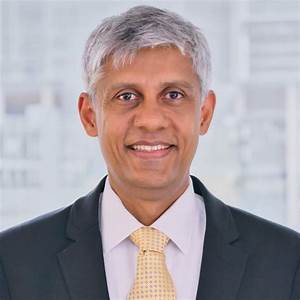
NOTE: This interview was first published for Junior Stock Review Premium readers on April 2, 2020. Become a today and get my best investment ideas, market commentary and interviews first.
Over the course of my life, there have been a number of people who have made a significant impression on me.
Some of these people made an impression before I’d even met them.
I have mentioned before that my introduction to gold and what it means to be a libertarian started with Doug Casey. I had never contemplated the idea of sound money or the short falls of government before hearing Casey’s opinions.
From there, I went down rabbit hole, which brought me to the junior resource companies and invariably, I heard Rick Rule speak.
Every time Rule speaks, there’s something to learn about what it takes to be a successful investor in the junior resource sector.
If you haven’t already, go to YouTube and search his name. Watch any of the videos and listen for the “how.†It’s in there and it’s invaluable.
Finally, and more recently, there is Jayant Bhandari.
Bhandari is a friend, a Libertarian, a fellow investor in the junior resource sector and a major influence in my life.
In a recent conversation, we covered a number of important topics about investing and life.
Bhandari’s insights will make you a better investor, of that I have no doubt.
Enjoy!
Brian: Current stock market dynamics can send investors on an emotional rollercoaster – seeing your portfolio plummet in value is something that most investors fear. Adding to this, there’s the risk that Covid-19 poses to you and your loved ones, which certainly has a compounding effect.
I have a two part question. First, with all the uncertainty in the market, do you view this as an opportunity to buy or is it time to sell?
Second, if it is an opportunity to buy, how are you able to put emotion to the side and take full advantage of the situation?
Jayant: I have been loading up. The best time to make money is in a bear market, when everything gets sold off, based not on valuation but on emotions.
When I buy something, I make sure to have a valuation. I always have a buy and a sell price for everything I own.
Even in a normal market, prices of individual companies are volatile. As I would have taken a calculated decision by trading in something, I do not beat myself up if thereafter the price changes against me, which almost always happens. Those who beat themselves up condition themselves to be emotional.
I want to restrain my emotions at all times. That way, I try to get objectivity to guide me. Of course, I make sure that I have enough cash at any point of time to not have to worry about my living expenses. If one has to worry about living expenses, one will inevitably get emotional.
One question remains. What is the best time to buy? How should one know when the proverbial knife has stopped falling?
I do not accept the concept of “falling knife.†There is no way to know when the market will stop falling. We cannot predict when it will turn around and start going up. So, when the price is right, I do what I intended to do. That, of course, means that I buy and sell too early. But those trying to perfect the timing keep waiting. For me, the right time is based on what I decided to be my buy and sell prices.
Brian: In my view, to be a consistently successful investor in the junior resource sector, you need to buy companies with good management teams that are selling at a price which is less than their intrinsic value, and have an acceptable risk profile.
In saying this, investors do have to be wary of value traps, which I define as companies that have the potential to never escape the market discount.
First, do you agree that value traps exist or is it just a matter of the investor getting the thesis wrong?
Secondly, if you do agree that value traps are out there, do you have any advice for steering clear of them?
Jayant: It took me a very long time to be respectful of the concept of “value-traps.†This concept is very hard to comprehend for anyone who makes objective judgements. A rational person thinks that, sooner or later, someone rational must start valuing a company based on its inherent value.
Most people like to think that the management of a company will take actions to correct the market perception or deploy capital in a way that the company gets the respect of the market.
Such an “objective†investor forgets to take into account the negative value that a bad management imposes on the company. “Value traps†are not just value traps, they are reflections of crooked or stupid management in command, who for whatever reason cannot be removed, and who impose a consistent negative contribution on the company.
An investor might erroneously think that stupid people cannot rise to the top. Alas, there are many ways to the top. My liking for the free-market does not fool me into thinking that it would be a panacea for all ills.
In general, I avoid any company run by a crooked or stupid management. Or at the very least, I account for the negative value that a bad management imposes on a company.
If you would like, I suggest you have a look at two companies, both that offer seemingly fabulous upsides, but are destined to stagnate.
One is G-Resources, a company that trades in Hong Kong (code: 1051). This company has a whopping US$1.5 billion in cash or cash equivalent. The company unfortunately trades at a mere US$0.23 billion market capitalization. There is seemingly a 550% upside. This looks unbelievable, but the problem is that making a hostile takeover of a cash-rich company does not work. The management gives no dividend and pays itself a very high salary. It is a no-brainer that despite seemingly such a huge upside, the cash will get frittered away, with an eventual value of likely zero.
Or look at Jubilee Exploration (JUB). This company has more in cash value than is its market capitalization. Based on my valuation, the company offers, perhaps, an easy 1,000% upside. Alas, a shareholder does not see how the upside will ever be paid out to him in dividend or capital gains.
Of course, both the companies I mentioned are not for people to buy, but to show how value-traps are real and why they might continue to exist to the end of the life of the company.
Brian: On March 23rd, the U.S. Federal Reserve, in an emergency FOMC statement, announced that they would essentially do everything in their power to prop up the American economy. They have dropped interest rates to 0% and have essentially indicated that they are prepared to infuse an infinite amount of money into the financial system.
The really crazy thing is that the Fed isn’t the only one taking these unprecedented steps. Countries around the world have pledged countless amounts of money to their corporations and citizens to minimize the impact of this global crisis.
In your opinion, will these financial measures be enough to contain the economic impact of the Covid-19 crisis and, if so, at what price has this containment come?
Jayant: Such “containment†measures are like an icing on the cake for an investor. When they were announced the stock market sky-rocketed. If I cannot fight it, I prefer to profit from it. I tend to buy more stocks when I know that they are falling because of lack of liquidity, for I know that the government would pitch in with more paper. Everything is immoral about this printing press.
From a macro perspective, however, printing money works as termite. It eats away the innards of any society, not just by destroying the capital by encouraging mal-investment, but also by imbuing immoral, irrational behaviour among the citizens. What becomes a personal relief for an individual is destructive to the society, which in the end is a mere transfer of money from one wallet to another, from the strong hands to the weak hands, along with massive loss of capital through friction (bureaucracy, regulations, etc.).
In any social emergency, there is indeed a need to keep the economy on ventilator to give it time to recover. However, when you must use the ventilator of the printing press, you pre-empt people within the society from helping each other, which is a more accountable system.
Fed’s printing press discourages people from saving during the good times, savings being what is needed to fight off the need to print money.
Brian: In my view, we live in
a society of paradigms or bias that lock us into thought patterns that keep
many of us blind to other alternatives that may be more efficient or
beneficial.
Whether it be financial, political or social, in your opinion, how does one keep an open mind and see through paradigms and their own inherent bias?
Jayant: Today the media and the institutional system encourages consumerism and hedonism, which are nothing but signs of decadence. My view is that the biggest reason we get set into a fallacious paradigm, which refuses to change despite evidence, is because of what have traditionally been know as sins. Our lust, greed and fear warp our thinking. We want to believe what suits our animal instincts. That does not mean that we necessarily supress our desires, but we must attempt to understand how they guide our thinking, conduct and decision-making.
Moreover, we are biological creatures and our habits and ways of thinking get encoded in us. It is very difficult for us to change our minds. My guess is that an awareness about this should make it easier for us to change when time comes.
Brian: In 2007, you wrote in an article entitled Twenty Observations of Liberty and Society, which was published in the Liberty Magazine,
“Every little bit of totalitarianism in our minds, however benign it may appear, helps to produce a complexly corrupt and coercive society, endlessly mirroring itself in the workings of the state. People should learn to see this connection. Libertarians should learn to see it. They should learn that the seedbed of oppression is not the state but the culture.†~ Liberty – pg.53
I think this is a very important insight, one that may not be completely understood by everyone upon reading it for the first time.
Can you please give us some context as to how you came to this realization and why it is important for people to learn to see it?
Jayant: I grew up in India, a grotesquely poor, wretched, superstitious, and backward society. I often meet Indians who are tired of corruption they face from the government. A moment later they happily offer bribes to get what they don’t have a right to, or they cheat their clients or customers. It is a society of distrust, where there is no moral code. Everyone is driven by expediency.
One corrupt bureaucrat I knew in Delhi told me once with tearful eyes how he had bought house for his son in London from the bribes he had collected. He then told me that his son was still expecting more and cheating him. What else did he expect when he had taught a certain moral code to his son?
Virtually every Indian I meet wants to be free, but desperately wants to control lives of other people.
Now, reflect of the above and tell me what kind of people will such a society supply to work in the government. What kind of motivations, drives and interests such bureaucrats have? What kind of incentive and feedback would such a society provide to those in the government?
Only in a society of moral and rational people can you expect a sensible government, which by definition will be minimal in size, and will constantly face forces for further reduction in its size.
Brian: Last year, you opened my eyes to the potential of East Asia, in particular, Singapore and Hong Kong. You have mentioned many times that, in your view, East Asia is the best hope for the future of humanity.
This statement has a lot of weight.
In your view, why is East Asia the best hope for humanity?
Jayant: Singapore, Taiwan, Japan, South Korea, and Hong Kong have not only kept a lot of their own values, of honor, respect, hard-work, loyalty, etc. but have strengthened them as a result of their interactions with the West. They have in a way adopted and adapted many of the good values of the western civilization, the one civilization I have know. The end product of this adoption is that East Asia today is more western in a good way that the West is today.
East Asia has not given much credence to the culturally Marxist forces that have emerged in the West over the last several decades, the forces that encourage hedonism, drugs, and a sense of entitlements and gradiences. This partly happened because East Asia is not necessarily democratic in the way that the West has become. So, the base desires of the masses do not reflect in the conduct of the government to the same extend. Moreover, East Asia has adamantly refused to accept refugees and immigrants, most of who come with a very strong psyche of expectations, and a sense of entitlement and grievances, which they readily impose on their hosts when they get the right to vote. Look at it this way, immigrants and refuges are carrier of the same cultural-virus they claim to be running from.
A homogenous society is, also, more trusting and loyal.
Of course, the leftist media of the West does not like East Asia and cherry picks bad aspects of it, corrupting western people’s understanding about East Asia. The fact that East Asia is not as democratic as the West is, it hasn’t brought in immigrants who refuse to assimilate, and hence retained many of the good qualities of the western civilization makes its goodness sustainable, when the West, alas, has started to sink.
I go to China several times a year. A lot can go wrong in China, but so far it has been on the same trajectory as South Korea or Japan was on at one point of time. Yes, there is tyranny, heavy-handedness and over-secrecy in China, but I am not comparing China with the US. I compare China from where it has arrived, a positive change unseen in human history.
My view is that the US does not have much time left. After Trump is gone, the US, given a massive demographic shift that is underway, will swing the US rapidly to far left. Without the crutches that the US is for the rest of the West, the West will start falling apart very quickly. The Third World stays relatively sober because of the fear of the US. That leaves only East Asia as the surviving sane part of the world.
But can countries like Japan defend themselves with the US presence? Again, while Japan might not call its armed forces as army, but they have a formidable defence force. East Asia will survive, or at least is the only area that has a hope of surviving.
Brian: On July 25th, in Vancouver, following the Sprott Natural Resource Symposium, you will be hosting the 2020 edition of the Capitalism & Morality Seminar.
In my opinion, Capitalism & Morality has no comparison; its structure and list of speakers are unique and of the highest quality. I wouldn’t miss it and am honoured to be a part of it this year.
Past speakers include Rick Rule, Doug Casey, Adrian Day, Albert Lu, Stefan Molyneux, Frank Holmes, Butler Shaffer, Keith Weiner and, of course, yourself.
The first Capitalism & Morality Seminar was in 2010 and has grown dramatically over the last 10 years.

Looking back to the seminar’s beginnings, what was your motivation to host such an event and what can people expect from the 2020 edition?
Jayant: I immigrated to Canada for one reason. I was searching for liberty and wanted to live in western civilization, which, I must restate, is the only civilization. Even East Asia is a civilization today because they have adopted the western ways of life and thinking. In running Capitalism &Morality, I want to, in my very little way, contribute towards protecting the greatness of western civilization, which is what distinguished humanity from animals.
The seminar has grown in support every year. And I am excited that you will be anchoring a panel discussion this. All I can say about this year’s seminar is that it will be better than the earlier ones.
Your subscribers can get 10% off the price for the seminar by using coupon code, LENI. Anyone who pays, attends the whole day, and thinks he did not get value for money can ask for a full refund. Also, those who want to watch from home can do so for free on YouTube.
Get the e-book Junior Resource Sector Investing Success: The Risks, Rules & Strategies You Need to Know today, when you become a FREE Junior Stock Review VIP .
Until next time,
Brian Leni P.Eng
Founder – Junior Stock Review Premium
Disclaimer: The following is not an investment recommendation, it is an investment idea. I am not a certified investment professional, nor do I know you and your individual investment needs. Please perform your own due diligence to decide whether this is a company and sector that is best suited for your personal investment criteria
Premium Issue #3 – April 2020
O3 Mining (OIII:TSXV) Update
Market Update – Week of April 5th
A Conversation with Jayant Bhandari of Anarcho Capital
First Mining Gold – Springpole and Goldlund Project Site Visit
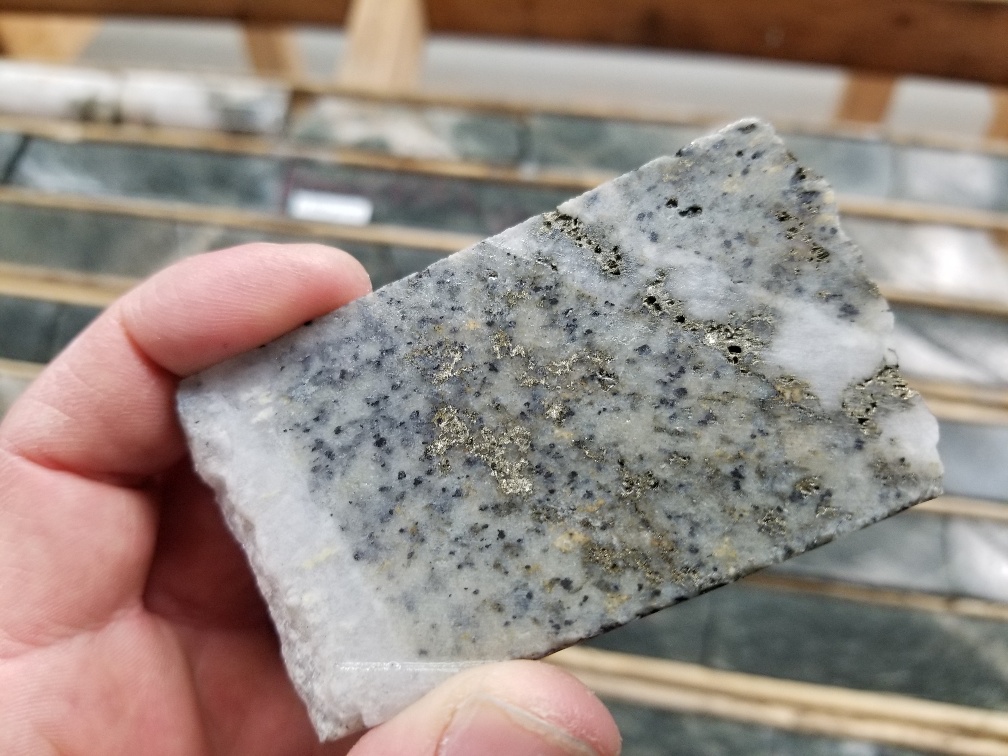
NOTE: This site visit report was sent to Junior Stock Review Premium subscribers on Mar.15th. Get my insights first by becoming a Junior Stock Review Premium subscriber today and save 40% using the promo code PREMIUM, until March 31st.
There is nothing like a site visit to gain perspective on a junior resource company which is moving their project towards a PFS or FS.
You just can’t beat getting a physical perspective on where a road may be built, or the mine’s proximity to a community, or where a tailings facility will be located.
Seeing the lay of the land is an X-Factor.
Additionally, it gives you the chance to spend time with management in a less formal way.
Meeting someone at a conference, at a booth, you are typically seeing a façade.
Breaking bread, having a drink or simply travelling together is a great way to see people for the way they really are.
This past week, I had the chance to travel to northern Ontario, specifically Sioux Lookout, to see First Mining Gold’s Springpole and Goldlund projects.
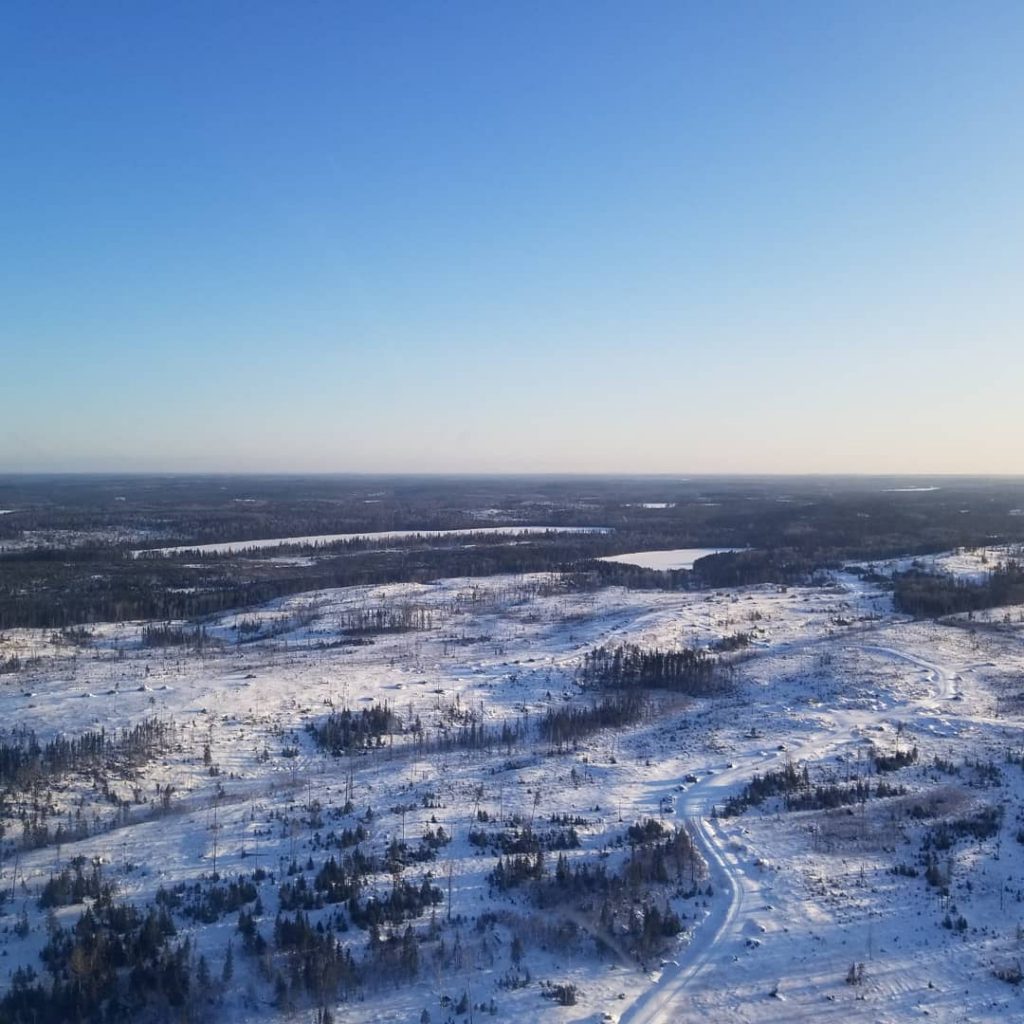
First Mining’s land bank strategy, which the company was founded on, is gone.
A new management team, led by CEO Dan Wilton, is in, and with them, have brought a renewed focus on the development of their best projects.
In short, I will not be adding First Mining Gold to the Junior Stock Review Premium Portfolio.
While I do see value in owning the company at its current share price, I think that the risk to reward profile of the company isn’t good enough to make its way into the portfolio at its current valuation.
There are other companies that have better upside potential and less risk associated with them.
With that said, I have put together my thoughts on First Mining Gold for you here.
Enjoy!
First Mining Gold (FF:TSXV)
MCAP – $107.6M (at the time of writing)
Shares – 633M
FD – 722M
Strategic Ownership – Management 3.3%, First Majestic 2.3%, Institutional 7%
Cash – roughly $12M after recently closed $8.5M financing at $0.22 and a 3 year ½ warrant at $0.33
Site Visit – March 9th and 10th
After being away from home at PDAC the week previous, I decided to forego a hotel the night before my 8:20am flight to Thunder Bay.
It was great to sleep in my own bed, but waking at 3am to drive to Toronto’s Pearson International Airport was tough – especially with the time change the night before!
From Thunder Bay, I took a small jet operated by Bearskin Airlines to Sioux Lookout.
Sioux Lookout is a key location in northern Ontario because it’s home to one of the major hospitals – Meno Ya Win Health Centre.
Next to health care, I’m told the other major draws to the area are forestry, construction, mining and one of my favourite pastimes, fishing.
Day 1 – Goldlund Project
Upon landing in Sioux Lookout, I was picked up by a representative of First Mining Gold and brought to the Goldlund project.
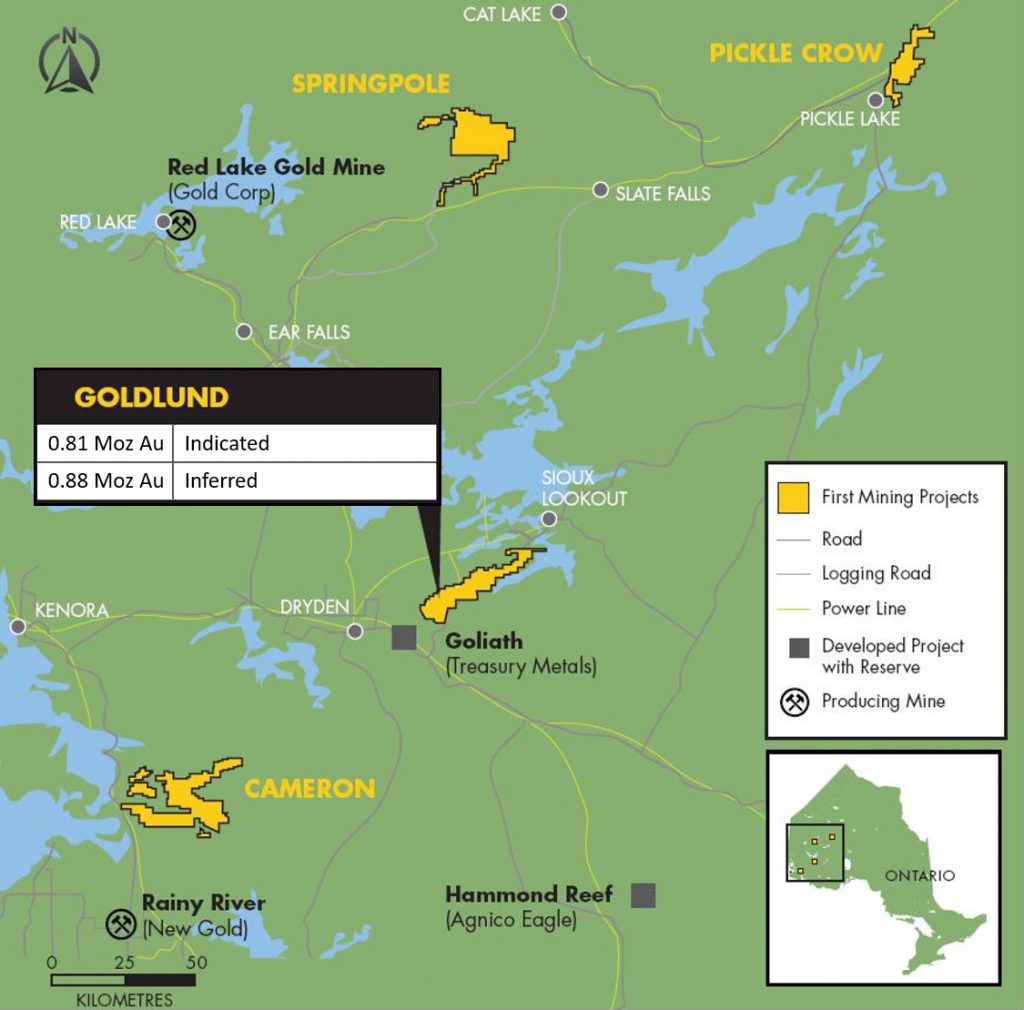
The Goldlund property has good infrastructure with a main office building, a few maintenance structures, a large core shack and 2 core storage facilities.
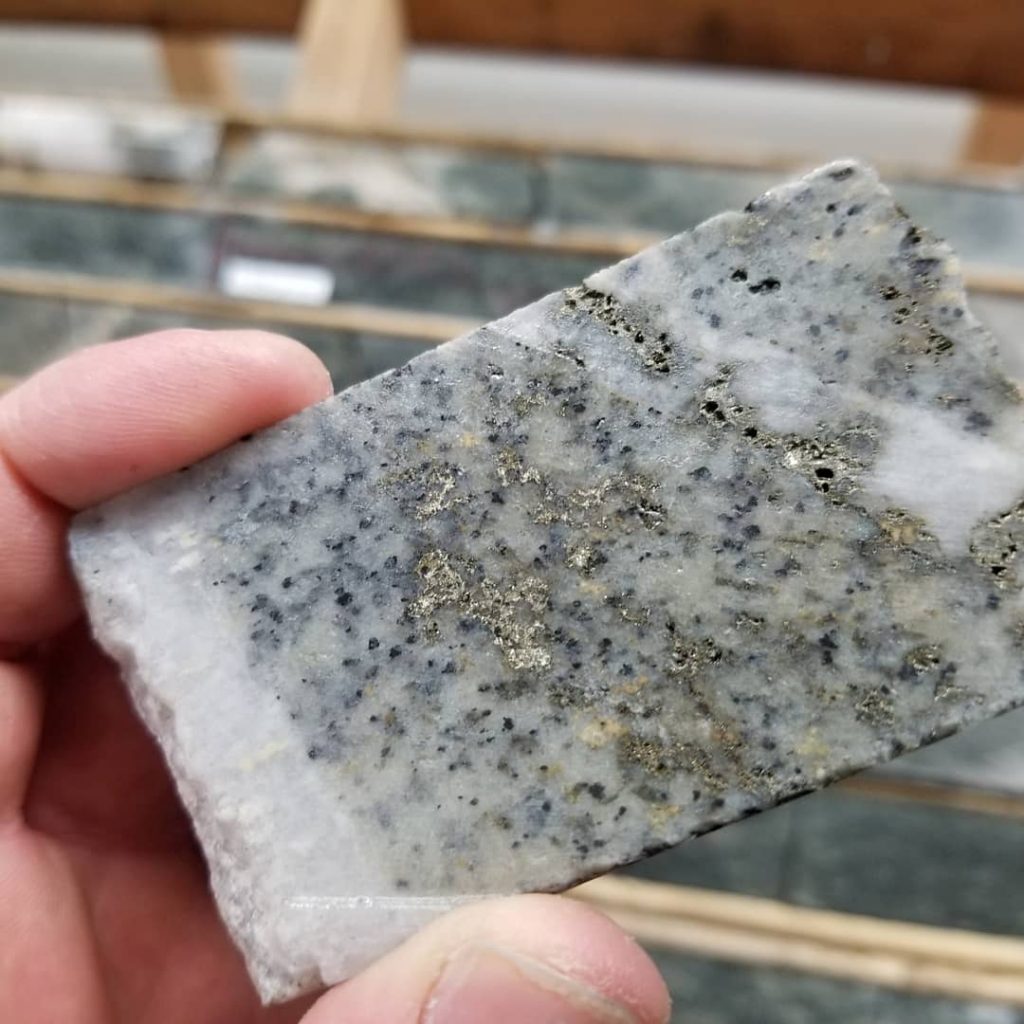
Historically, Goldlund was host to an underground and open-pit mine between 1982 and 1985. In fact, the mine’s old infrastructure is still around today, with the main office building being one of the historic structures.
Goldlund is an advanced exploration project which encompasses 280 square kilometres and has a current 43-101 compliant resource on it.
Indicated Resource – 12.8Mt at 1.96 g/t for 809,200 ounces of gold.
Inferred Resource – 18.3Mt at 1.49 g/t for 876,954 ounces of gold.
Prior to First Mining, Goldlund was owned by a private company, Tamaka Gold Corporation. This changed in 2016, when Tamaka was absorbed by First Mining.
In December of 2019, First Mining closed a flow through financing at $0.27 per share. I was told by management that this money will be used exclusively at Goldlund for mostly infill drilling on its main deposit.
After lunch on Day 1, we had the chance to have a Q&A with Goldlund exploration geologist, Andrew Wiebe. Wiebe outlined the geology of the project and gave us an overview of its exploration potential.
I was particularly intrigued with the discussion over the exploration targets: Miller prospect, Camreco South and the Mustango target.
First Mining is concentrated on converting the inferred portion of the resource into the indicated category, which should be straightforward considering it is an intrusion-related deposit and makes sense from a corporate point of view.
First Mining can afford to risk capital to exploration drilling given the market and their current MCAP. Money needs to be spent on straightforward valued-added actions.
Clearly, however, there is potential outside of Goldlund’s main deposit, making the project even more attractive than it is already, considering its size, grade and location.
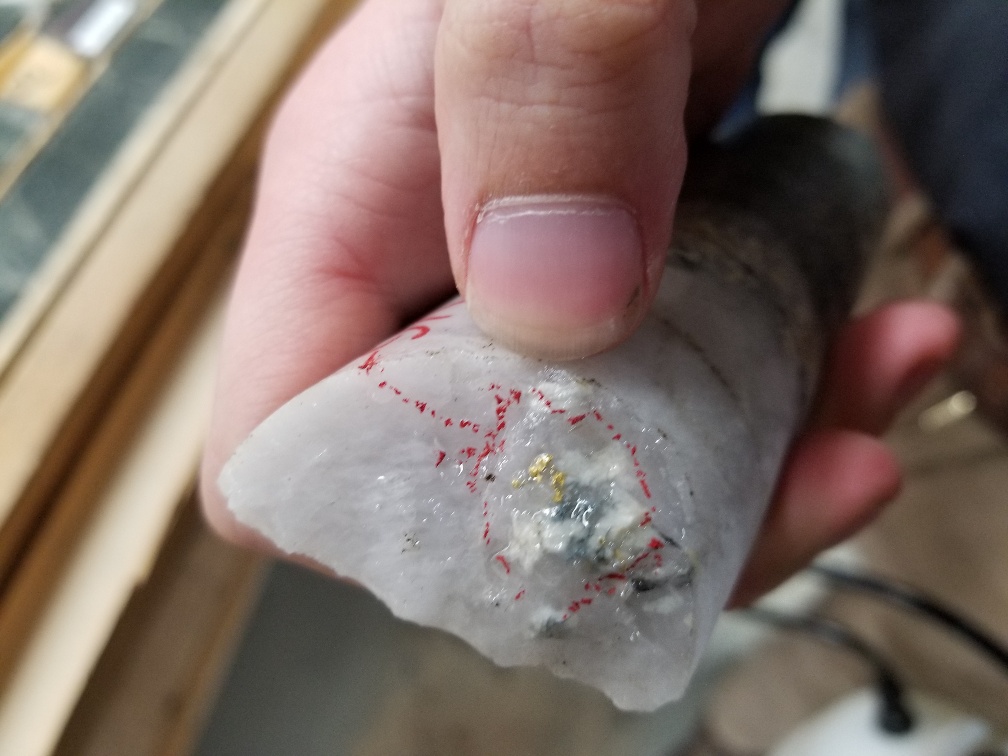
After discussing high level points for the project, we visited the core shack and drove to the drill rig which was set up on the Main deposit for infill drilling.
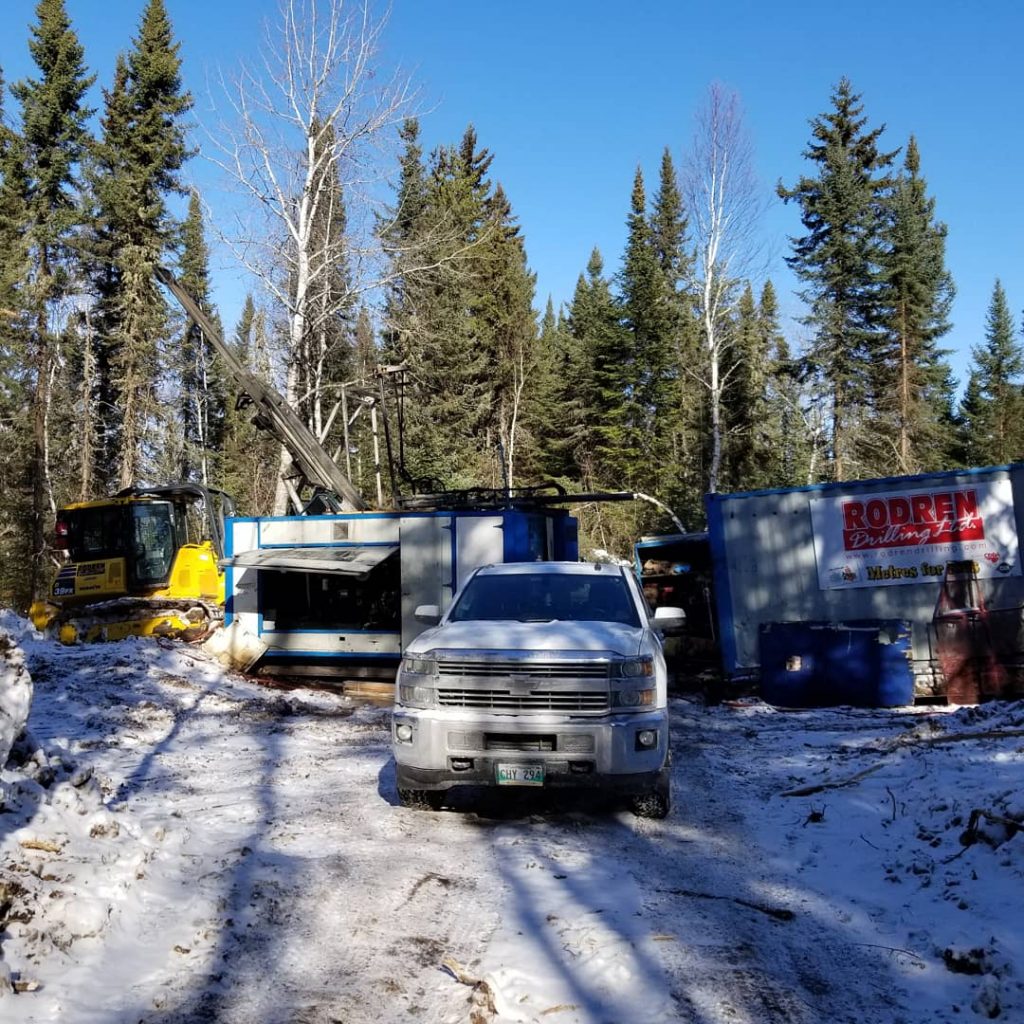
As you can see, Goldlund’s core has visible gold (VG), which is always exciting to see.
Day 2 – Springpole Project
Day 2 started early, with a quick 6:30am breakfast.
Once finished, we were headed straight to the airport, where we caught an eight seat Cessna Caravan which flew us to the Springpole project.
The flight was roughly 50 minutes long and we landed on the frozen Springpole lake.
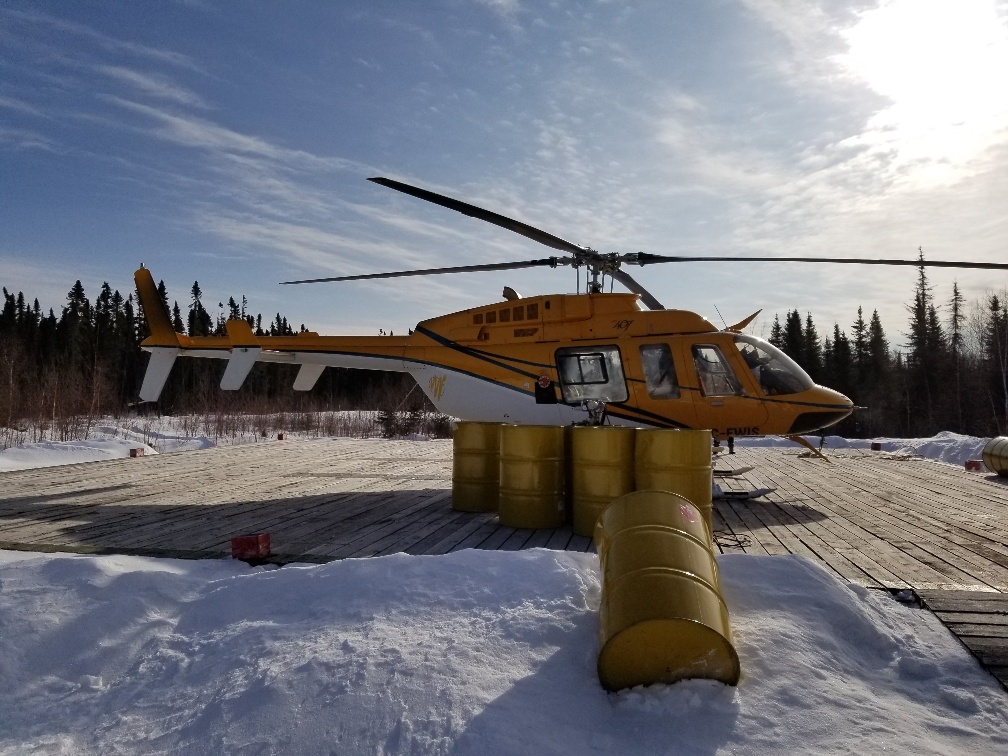
Upon landing we headed straight for the camp’s cafeteria where they were set up for the Springpole presentation, covering the mine plan outlined in the updated PEA, and the improvements that they were looking to make heading into the PFS.
After going through the project’s high level points, including a good briefing from First Mining’s David Mchaina, VP of Environmental and Sustainable Development, we jumped in a helicopter to get a good look at the lay of the land.
Specifically, for me, this gave a good perspective of the location of the proposed coffer dams and tailings facility locations.
In retrospect, I wish I had more time at Springpole to really take it in and ask more questions, but we were on a tight schedule.
I will cover more of Springpole in the following Risks to the Investment section, and following that, in my valuation metrics.
Risks to the Investment
Investment in First Mining is not without risk. Here are what I believe are the biggest risks:
- Environmental Permitting – All mining projects have the risk of not being permitted, however, in First Mining’s case, it’s just as much if they get permitted, as it is when they get permitted.
Time is money.
As I mentioned in the overview of the project, a bay on Springpole lake will have to be dammed and drained to allow for the open pit to be mined.
Not only this, but the planned tailings facility is almost completely surrounded by water.
These are very real risks to the environment, which will have to be clearly addressed and explained to the Federal and Provincial governments, plus eight First Nations’ communities.
Management explained that they plan to submit one Environmental Assessment document to both the Federal and Provincial governments for simultaneous approval.
Also, the company is considering incorporating the use of a synthetic tailings liner and dry stack tailings into the PFS mine plan.
This will no doubt come at a higher cost, but will give themselves the best possibility of being approved.
Further, it should be noted that the damming of the lake for the construction of an open-pit mine isn’t unheard of in Canada.
Examples are Agnico Eagle’s Meadowbank gold mine and Rio Tinto’s Dvavik Diamond mine.
Permitting is going to be a long process and could be a hindrance to value recognition from the market.
Or, maybe the market will turn bullish and permitting risk won’t matter to a portion of investors.
- CAPEX Cost – Last fall, the updated PEA saw the upfront capital cost to construct Springpole into a mine almost double, moving to over $800 million.
At first glance, this seems very high, however, remember that Springpole is expected to produce roughly 400,000 ounces of gold per year – this is rare. Given other large undeveloped gold projects of similar size, the cost, from what I can tell, is in line.
Consider the following graph provided in the First Mining Corporate presentation:
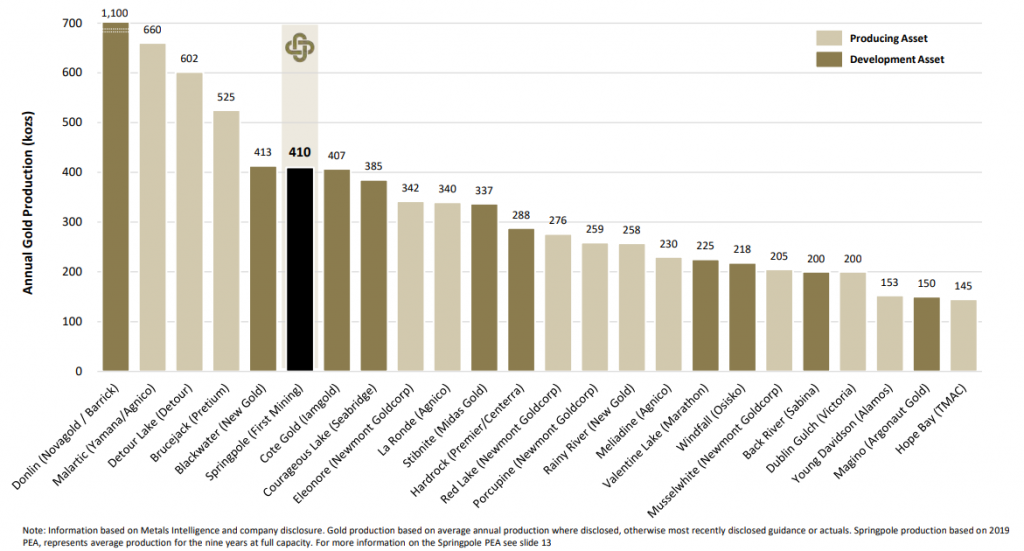
New Gold’s Blackwater is estimated to cost $1.8 billion to construct, Iamgold’s Cote Lake is estimated at $1.5 billion, Seabridge’s Courageous Lake US$1.52 billion, Midas Gold’s Stibnite is $1.12 billion and Sabina’s Back River is $476 million (but it is half the production).
My point is, although the CAPEX to construct Springpole will rise, in my view, costs will still be in a range which is in line with other large projects.
With that said, Springpole will have to rely on other factors to make it stick out from the crowd.
Other factors could possibly be location, mine life, exploration potential or AISC.
- Burn Rate – Management tells me that the company burns roughly $5 million per year without any value added work. Breaking that down, $3.5 million is spent in G&A and roughly $1.5 million is spent on project up keep.
$3.5 million in G&A is a lot and is rarely justified in my books. Management teams that are making this kind of money usually have share price charts that move in the opposite direction of First Mining.
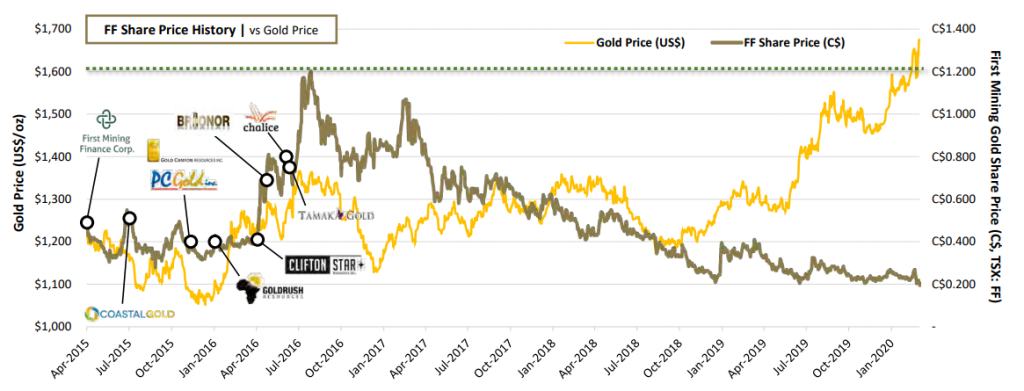
Examining the chart, you can see that over the last three to four years, shareholders have been delivered nothing but losses and dilution.
Conversely, good people demand top dollars, which I won’t argue with. Given that First Mining’s new team has only been around for a year, I think that they deserve a chance to deliver on their vision.
From what I can tell, the right people are now leading the company.
I haven’t met CEO Dan Wilton, but in asking around, he does have a good reputation.
Second most important is COO Ken Engquist.
Engquist is a technical guy with a very relevant skill set and resume.
Personally, having heard Engquist’s pitch on the path of the company, I’m interested to see how they develop their portfolio of projects over the next year.
With that said, it only goes so far.
As I mentioned, with a $5M per year burn rate outside of value-added work, they will be coming back to the market most likely before the end of the year.
Further, if First Mining were to finance under $0.22 in the future, I would consider it a colossal failure.
Concluding Remarks
As I said, I will not be adding First Mining Gold to the Junior Stock Review Premium portfolio.
With that said, I will be following the share price, as there may be opportunity to add it to the portfolio if the share price were to fall further.
You will be alerted if I change my mind.
To close, this is how I break down the value opportunity in First Mining Gold:
- Springpole’s Valuation – Springpole is not perfect, there is definite environmental permitting risk, but conversely, we are talking about a deposit that has 4.6 Moz (M&I) of gold and an estimated production capacity of around 400,000 ounces per year.
The fact is, there are just not many development projects like this.
At US$1500/oz gold, Springpole’s after-tax NP@5% is US$1.22 billion with a 28% IRR. Let’s assume that Springpole’s value is 10% of its NPV, which is, therefore, US$122 million. With the current USD to CAD exchange rate that is roughly $168M CAD.
The company has a MCAP of approximately $107 million CAD. Conservatively, there is almost 70% upside in the share price just in considering Springpole, never mind the other projects.
- Goldlund’s Valuation – Goldlund has an Indicated and Inferred resource totaling around 1.6 Moz of gold. Currently, there is no economic study on the project, but in my opinion, you can clearly see the value in owning a gold deposit next to the highway and power.
Because of this, Goldlund is easily the best bargaining chip First Mining has to play with moving forward.
Treasury Metals’ Goliath project is located in close proximity and shares some commonalities as far as I can tell. Many analysts that I know believe that Goliath and Goldlund should be in the same company at some point in the future.
However, we probably need a better market to make this happen.
For now, I think that assigning a value equal to Treasury’s current market valuation makes a lot of sense.
At the end of trading on Friday March 13th, Treasury’s MCAP was roughly $30M.
- AuTecto Minerals Joint Venture on the Pickle Crow project – AuTecto is led by a team with a history of success – Bellevue Gold Ltd. and Gryphon Minerals Ltd. Considering Pickle Crow is a 3rd string asset in First Mining, I think this is a great deal with a lot of potential to pay dividends on something that would otherwise be sitting on a shelf.
In terms of valuing the JV agreement, I will discount the $3 million spend over the next 3 years and say it is worth $2 million. This only assigns value to the spend, no value to the project.
- Other projects – Hope Brook, Cameron, Pitt, Duquesne, Duparquet and Mexican assets. There is a lot of value here, but considering there will most likely be no real value-added work completed here, I will view it purely as icing on the cake.
Putting it all together, First Mining Gold is trading at half of its intrinsic value, conservatively speaking.
While this gives us as investors plenty of downside risk protection, given the risks associated with the company, I believe there are better places to invest our money.
Don’t want to miss a new investment idea, interview or financial product review? Become a Junior Stock Review VIP now – it’s FREE!
Until next time,
Brian Leni P.Eng
Founder – Junior Stock Review Premium
Disclaimer: The following is not an investment recommendation, it is an investment idea. I am not a certified investment professional, nor do I know you and your individual investment needs. Please perform your own due diligence to decide whether this is a company and sector that is best suited for your personal investment criteria. I have NO business relationship with First Mining Gold, however, they did, along with Soar Financial Partners, pay for most of my travel expenses.

